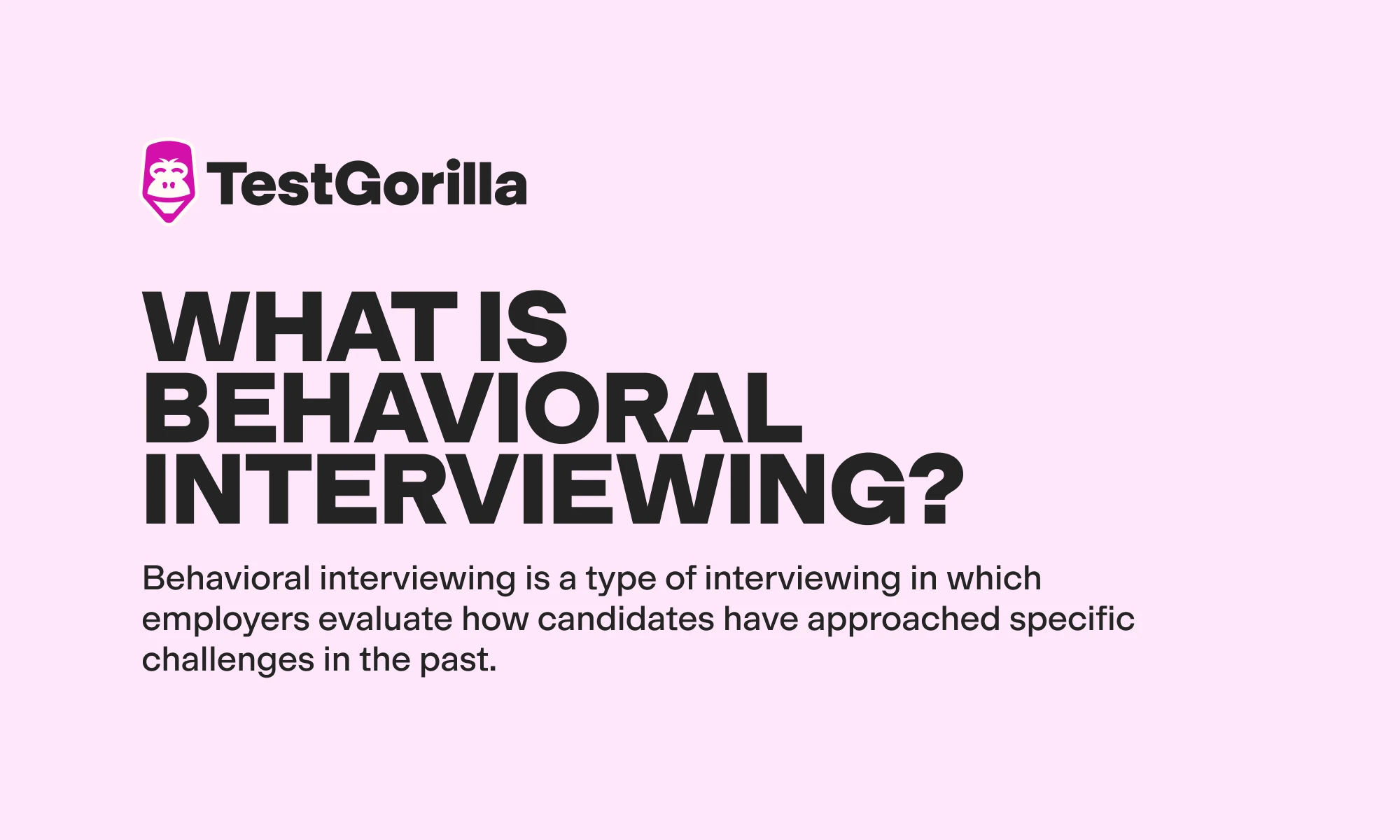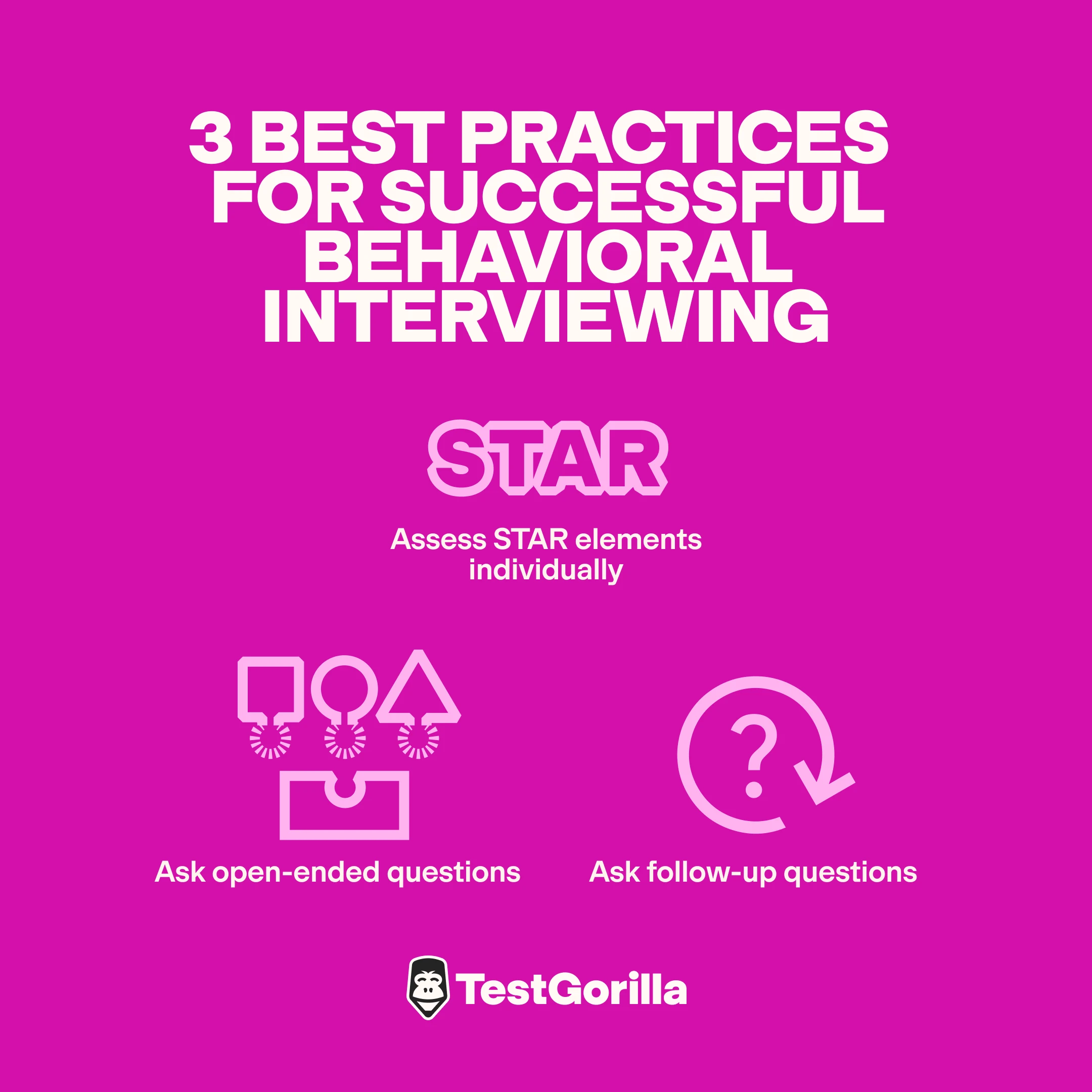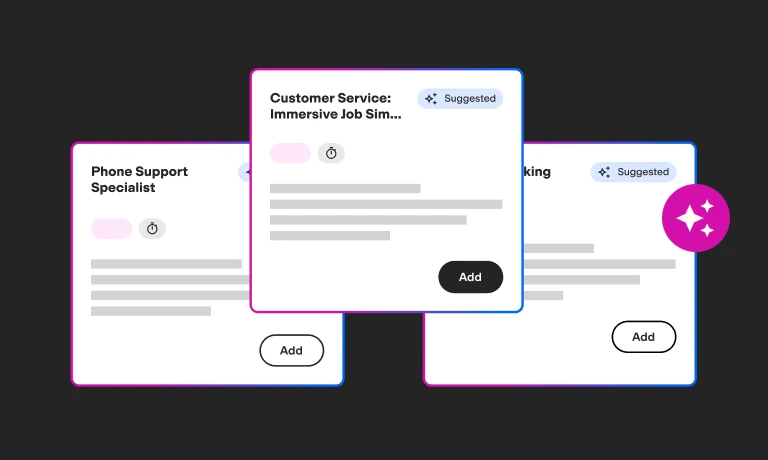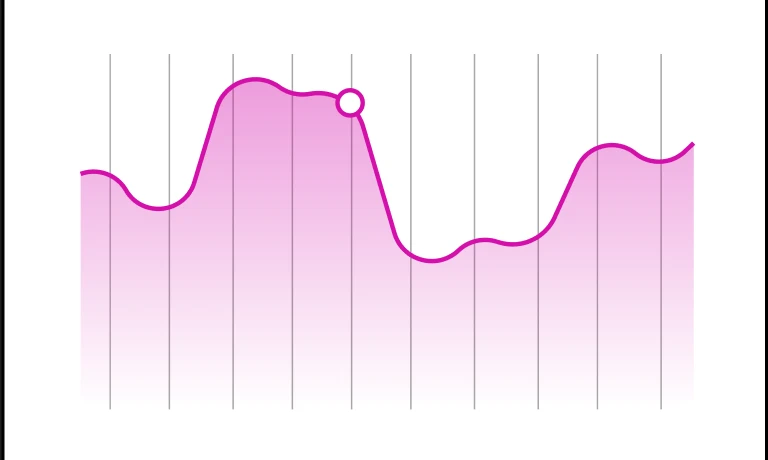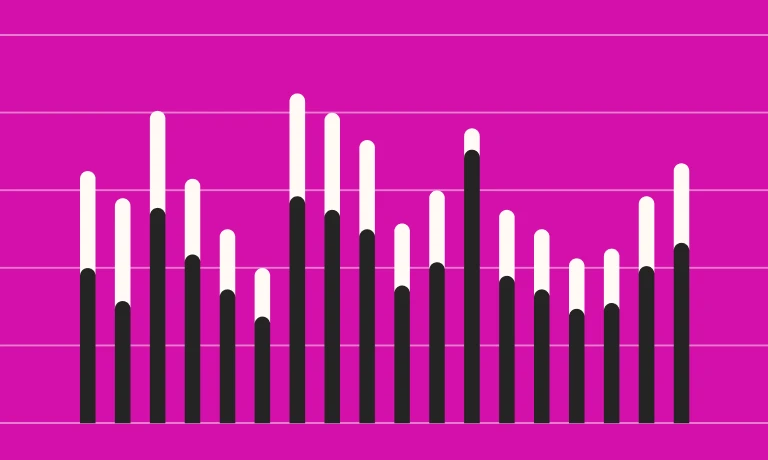What is behavioral interviewing?
Behavioral interviewing is a type of interviewing in which employers evaluate how candidates have approached specific challenges in the past. The idea is that if potential hires successfully used certain soft skills and personality traits previously, they’ll do the same in their future roles.
For example, an employer might ask a candidate to describe a time when they had to resolve a conflict within a team. The candidate’s response can reveal their problem-solving skills, communication style, and ability to handle interpersonal challenges.
Behavioral-based interview questions often begin with phrases like "Tell me about a time when you…” or “Give an example of a situation where you…”
While behavioral interview questions commonly test soft skills such as leadership, teamwork, and conflict resolution, you should align your questions to the skills and traits outlined in the role’s job description. For example, for a customer service role, you could ask questions focused on communication, resourcefulness, and time management skills.
Ideal answers to behavioral interview questions clearly define the candidate’s actions and results. Candidates often answer in STAR format, explaining the situation they faced, the task they took on, their actions, and the result.
Why is behavioral interviewing important?
Behavioral interviewing goes hand in hand with interviewing for hard skills, job-related competencies, and culture add to determine candidates' fit for the role.
But unlike traditional interview questions – such as "Why should we hire you?" or "Where do you see yourself in 5 years?" – behavior-focused ones help you:
Reduce subjectivity: Specific behavioral examples are easier to rank without bias across interviews, contributing to a more data-driven recruiting process.
Uncover unique approaches: Through in-depth examples, top candidates showcase special skills and creative solutions, which you can assess against job requirements.
Spot unwanted behaviors: Behavioral questions also reveal undesirable actions and traits, such as escalating workplace conflicts, which helps you filter out poor-fit candidates.
Key components of behavioral interviewing
Here are two must-have ingredients for effective behavioral interviewing.
1. It directly tests the role’s desired abilities
Your interview time is limited, so test the behaviors most essential to the role. Here’s how:
Read the job description. Whether you or someone else crafted the job description, carefully read it and rank the role’s top five most important soft skills. For example, for a marketing assistant job, these may be teamwork, time management, adaptability, prioritization, and creativity – in that order.
Assess the top 2-3 soft skills in your first-round interview. This way, you filter your candidate longlist based on job-critical behavioral attributes. For instance, you could ask, “Tell me about a time when you had to collaborate with a team to meet a tight deadline. How did you ensure everything went smoothly?” This would assess teamwork and time management skills.
Evaluate additional skills in your second-round interview. Using the marketing assistant example, you might ask, “Could you tell me about a creative idea you proposed that improved a process or outcome?” to evaluate creativity.
2. It’s part of a structured interview process
A structured interview has a planned question sequence and scoring system, helping you rank candidates bias-free. Here’s a quick example of a structured behavioral interview scorecard:
Behavioral questions (ask all candidates)
Describe a situation where you proposed a different action plan in your team. What was the outcome?
Rate: 1-10
Tell me about a time when you were under pressure.
Select: Exceeds requirements, Meets requirements, Doesn't meet requirements
A great candidate makes scoring answers easy. For example, they detail task difficulty (e.g., turning 10% sales growth into 30%) and explain reasons behind choices (e.g., to reduce long-term costs).
The best insights on HR and recruitment, delivered to your inbox.
Biweekly updates. No spam. Unsubscribe any time.
3 best practices for successful behavioral interviewing
Follow these best practices for your behavioral interviews, whether you conduct them by phone, online, or face-to-face.
1. Ask open-ended questions
An open-ended question, rather than a closed-ended one, gives the interviewee more room to build a layered answer that reveals their soft skills and behavioral traits.
For example, the answer to “Have you successfully resolved a team conflict?” (a closed question) will center around a “yes” or “no.” By contrast, “How did you resolve a team conflict?” lets the candidate explain their process and behavior.
2. Assess STAR elements individually
A candidate’s STAR answer outlines the situation, task, action, and result (STAR) of a specific moment in their previous or current role. While the order of STAR elements within an answer can vary, it’s essential to assess each component individually to understand how the candidate approached the challenge and delivered results.
Example STAR answer
Question: “Tell me about a time when you worked effectively in a team.”
Answer: “My team had a client who needed a project finished quickly (situation). I learned a new troubleshooting method to identify the problem (task): a technical issue slowing everything down. I took the lead in fixing the issue (action). In the end, we delivered the project 24 hours before the deadline, and the client was very satisfied, which led to more work from them (result).”
Here are some tips to assess an answer's STAR components individually:
Situation: Check if the interviewee mentions the constraints of the situation (e.g., time sensitivity).
Task: Assess the scale and difficulty of the task (e.g., a one-person fix versus a multi-stakeholder job).
Action: Ensure the candidate separates their action from others'. Rate how effectively they use and/or build the specific behavior (e.g., problem-solving) within the action.
Result: See if they include a measurable result (e.g., delivered 24 hours before the deadline). Bonus points for explaining how the result impacts the wider business.
3. Ask follow-up questions
After your interviewee’s answer, probe further to gain more insight into their job suitability. For example, your follow-up could:
Drill down on details. Depending on the role and your business’s requirements, re-focus on a specific part of their answer, such as the stakeholders involved or the specifics of a job-related task.
Introduce a new scenario. Ask the candidate how they’d act if the situation, task, or result were slightly different. While this drifts into scenario-based interview territory, you’re still testing their (hypothetical) response to a real-life situation.
Example follow-up question
How did you predict your colleague would respond in that way?
What would you have done differently if your problem was lack of budget instead of a lack of time?
By following up, you also offer a better candidate experience by demonstrating that you listened and are keen to learn more about your prospective hire.
Common challenges with behavioral interviewing and how to overcome them
Behavioral interviewing is essential, but you might encounter some potholes. Be ready to swerve these common challenges:
Challenge | Solution |
Candidates may take credit for former team members’ achievements. | Ask detailed follow-up questions and confirm past achievements during reference checks. |
Interviewees might give vague or incomplete answers to open questions. | Request more details about the situation, task, action, or result. |
Answers can feel overly rehearsed. | Add a scenario twist to see the candidate problem-solve on the fly. |
Examples might not be directly relevant to the open role. | Ask for different examples that are closer to role responsibilities. |
Answers can be tough to score and/or compare between candidates. | Score answers’ STAR components on 1-5 or 1-10 scales. For more variety, involve multiple interviewers, especially in one-way video interview stages. |
FAQs
What are the top 5 behavioral interview questions?
The top 5 behavioral interview questions are:
Tell me about a time when you overcome a work challenge.
Discuss a time when you achieved a goal as part of a team.
Describe a time when your leadership qualities helped your team succeed.
How did you deal with a difficult customer or coworker in the past?
Share an example of how you handled constructive feedback at work.
What is the STAR method when interviewing?
The STAR method when interviewing is a way for candidates to structure their answers around a situation (S), task (T), action (A), and result (R). This model provides sufficient context for interviewers to assess whether candidates have the right skills and behaviorial traits for a role.
You've scrolled this far
Why not try TestGorilla for free, and see what happens when you put skills first.


